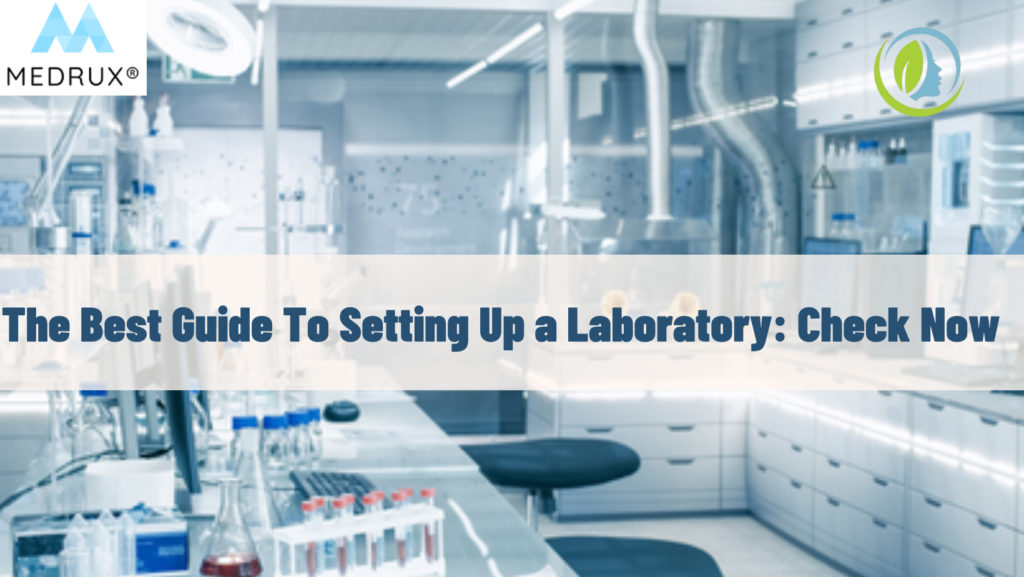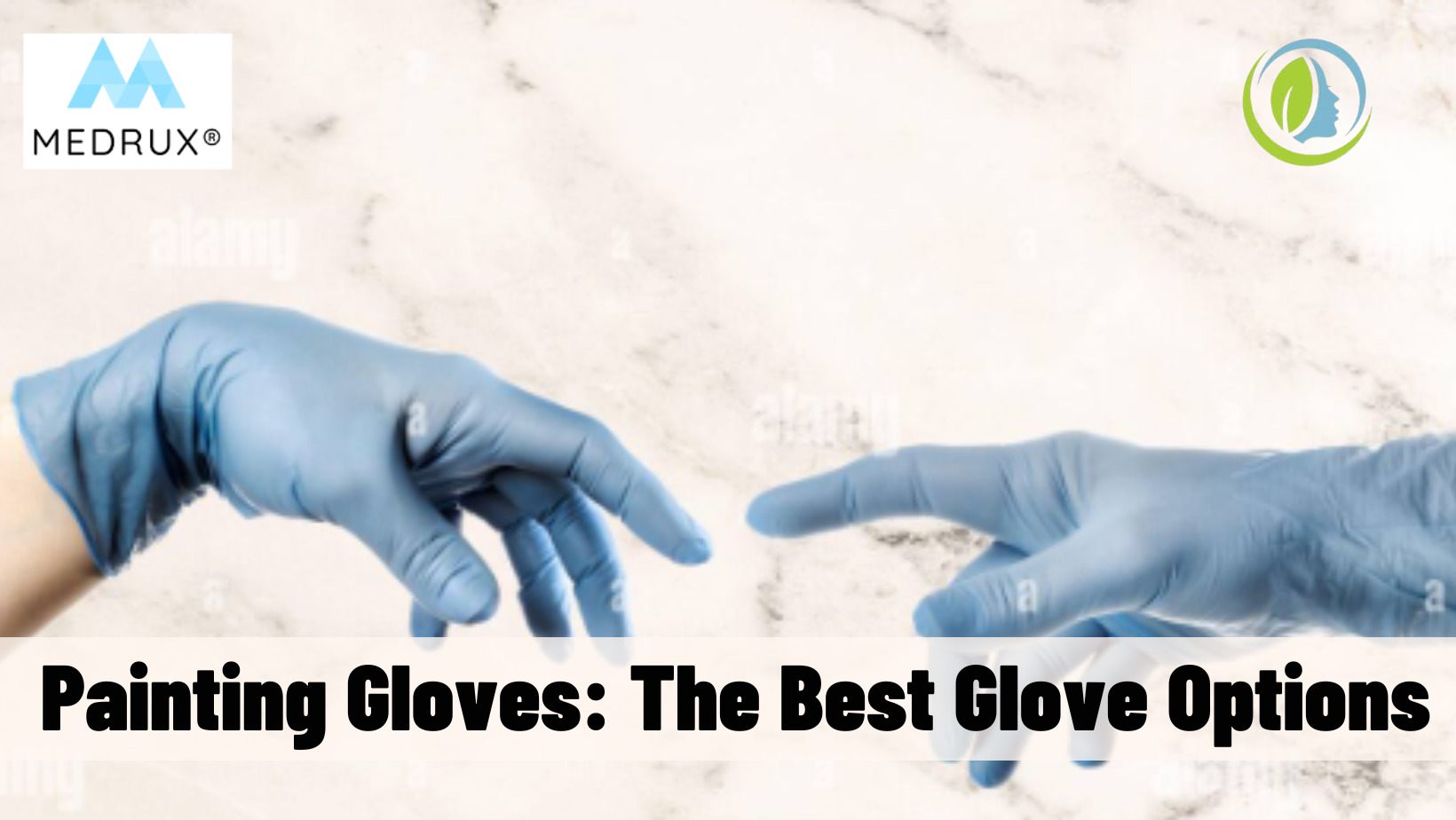Are you looking for equipment for setting up your laboratory?
Whether you’re an entrepreneur looking for an opportunity to enter the laboratory business or a researcher with a new scientific idea you want to experiment on and wish to have your lab, this article is for you!
Laboratories are places where you can control conditions to perform scientific, chemical, or technological experiments.
Additionally, these are the places where you’ll get examined for your health.
Numerous laboratories have different purposes and, therefore, other settings, measures, and equipment.
We’ve got you covered if you want to understand more about them and how they are equipped.
Let’s find out more.
What should you know before setting up a laboratory?
Setting up a laboratory can be overwhelming, with many factors to consider.
You must ensure your lab is functional, effective, safe, and serves its purpose entirely.
I am starting with the place, equipment, personal protective equipment, design, and lab furniture.
Here are a few steps to consider when setting up your laboratory:
-
What kind of laboratory will it be?
This is probably the most critical step: deciding what you want to do with your lab.
Why?
Because so many aspects will be determined based on the purpose, including the design, safety measures, and equipment you need.
Furthermore, planning is always a good idea because, when you think of the purpose, you are laying the groundwork and taking the first step toward building your laboratory.
A laboratory is just a space without the proper equipment.
Your equipment must meet the requirements of your lab function and be of the proper size that will fit in the lab space and can pass through doors if necessary.
When setting up your laboratory, the earlier you plan and decide on your equipment, the better it will be to avoid delays in delivery and manufacturing.
Moreover, you can ask for help from colleagues and people in the same field to know exactly what you need if you are unsure.
-
Laboratory Furniture
Laboratory furniture is an important aspect that you shouldn’t overlook because it will be a vital factor in your design.
Moreover, you might need to consider whether your lab will be fixed forever with the same equipment and purpose or if there might come a time when you might need to expand, add new specs, or buy new equipment.
Will you need flexible and movable furniture for future changes? Or will you stick with the big, fixed, hard-to-move one?
-
Design the layout
The design of your lab’s layout is a highly crucial process; it needs careful planning because it will affect the rest of the work and the efficiency of your lab.
Your design will affect all areas, for example, hazardous areas, areas for equipment and people, private spaces, and storage areas.
The best designs will maximize your productivity and make you use the best space to optimize your workflow.
To do this, you need to consider your workflow and the sequence of steps in each process.
-
Safety measures
When you set up a laboratory, you must be familiar with the lab safety and health measures required to license your lab.
Each country has its own set of regulations that puts specific requirements for health and safety in laboratories.
This also depends on the type of laboratory.
Moreover, regular safety measures are found in almost every lab, such as fume extraction systems, fire extinguishers, first aid kits, fire blankets, and personal protective equipment (PPE) such as lab coats, safety eyewear, glasses, and gloves.
Additionally, washing sinks, emergency showers, and proper waste disposal are essential to maintaining safety.
In addition to making your lab eco-friendly, you need to ensure workers in the lab are safe.
Apart from the standard safety measures, some specialized safety equipment differs according to your lab type.
So, what are the different types of laboratories out there, and what are the different types of equipment you need to know about when setting up one?
Let’s dig in.
Types of laboratories:
Lab settings are not simple, standard, or universal. That’s because there are various types of laboratories in multiple industries.
Moreover, they can be in government forensic investigation centers, physicians’ offices, clinics, hospitals, and sometimes personal residences.
Additionally, labs are usually categorized according to their type of service, purpose, and function.
Let’s see some of the most popular types you should know.
Research and development (R&D) laboratories:
These are the labs where scientists, researchers, and people working on their doctoral projects work, pursue their research, and perform medical experiments.
Therefore, they are a crucial part of the technology and pharmaceutical industries; they help develop new drugs and make sure they are safe.
These labs usually provide better insights and understanding of certain diseases, medications, and illnesses.
These are, for example, the laboratories designed for COVID-19 vaccines.
R&D laboratories can be private labs run by pharmaceutical companies to develop new products or public labs that help government agencies with their work.
Moreover, public R&D research labs can be found at public universities for young researchers to learn.
Analytical and Quality labs:
These labs are usually made to test the products and materials against standards.
Why?
Ensure these products are of high quality and meet the specific standards and aspects.
Biosafety labs:
These labs are designed to contain potentially harmful biological agents for scientists to study them safely and effectively.
They are designed in a unique way to help protect the researchers themselves, in addition to preventing the infectious agents from spreading outside and harming others.
They are divided into four levels, from BSL1 to the highest level, BSL4.
Cleanrooms:
A cleanroom is a controlled environment in which the number of airborne particles (dust, microbes, etc.) is controlled, classified, and designed to offer the cleanest area.
Why?
To prevent particle introduction, generation, and retention inside the room.
Additionally, you can control temperature, airflow, and humidity inside them.
Most cleanroom uses are for manufacturing products such as electronics, pharmaceuticals, and medical equipment.
In addition to these types are clinical or medical laboratories and chemistry laboratories.
We will go through them in detail next.
Setting up a medical or clinical laboratory:
These laboratories are where healthcare professionals test samples from patients to learn more about their health.
Additionally, they are equipped for diagnostic tests on tissues, cells, and bodily samples such as blood, plasma, urine, and stool.
These labs are designed to get more information about your health, diagnose diseases, or prevent them.
Furthermore, they help the doctors understand more about the patient’s case and progress, and of course, they aid in the treatment plan and selection of the proper regimen.
They can be separate diagnostic lab facilities or based in a hospital’s “hospital lab.”
The only difference is that hospital labs are designed to perform extraordinarily time-sensitive and emergency testing.
Some clinical laboratories are only specified for analysis to address the needs of medical and public health on a more widespread basis.
How?
through collecting samples from a sample of the community to assess illness trends to enhance
treatment choices, preventive measures, or vaccinations.
Medical and clinical labs are classified into several types based on the processes they perform, such as
- Microbiology
- Pathology
- Serology
- Histology
- Virology
- Bacteriology
What is the type of equipment you can find in medical and clinical laboratories?
As we mentioned, medical laboratories have a variety of complex chemical, biological, hematological, immunologic, microscopic, and bacteriological tests.
This, of course, depends on the subtype and specialty of the laboratory.
Some of the vital health data that is analyzed in diagnostic labs are:
- Metabolic markers (blood chemistry) such as glucose, urea, and potassium
- Liver function tests
- Heart disease and heart attack indicators
- Thyroid disease markers
- Various blood cell counts and blood cell sizes
- Viral and microbial infections such as HIV or H. pylori
- Immunological markers and antibodies
To do these efficiently, a wide range of equipment is needed when setting up a diagnostic lab. You may need the following equipment:
- Microscopes
- Hotplates
- Differential counters
- HB1Ac machine
- Centrifuge
- Tissue Diagnostics
What’s more, one of the most critical pieces of lab equipment is the analyzers that are usually used to conduct the tests, such as:
- Hematology analyzers for blood samples
- Urine analyzers for urine samples
- Blood gas analyzers for measuring the gases in the blood
- Chemistry analyzers for chemical materials
- Biochemistry Analyzer
- Electrolyte Analyzer
- Protein-serum analyzer
- DNA-Analyzer
Additionally, you will need an autoclave, the equipment used to sterilize surgical and pharmaceutical tools.
Further, laboratories must have a freezer or refrigerator to preserve samples, mixers, shakers, stirrers, and pipettes for handling.
For the microbiology lab, you may need an automated microbiology system, a water bath, a hot air oven, a drying oven, an incubator, a humidity cabinet, a biosafety cabinet, and a laminar airflow.
What about the personal protection equipment used in medical labs?
To ensure the safety of everyone in the laboratory, PPE is necessary.
PPE is often chosen according to a hazard assessment for the place to determine the proper level of protection.
When setting up your laboratory, ensure the workers have the proper PPE for their protection.
Medical and clinical labs usually have level D of PPE.
In those labs, workers are in frequent contact with chemicals and biological materials.
Therefore, a lab coat is a must to protect the clothing and exposed skin from getting into contact with these materials.
PPE, such as facemasks or respirators, is not usually needed unless for specialized tasks.
In addition to wearing closed shoes and having proper eye protection, gloves are among the most vital PPEs in medical and diagnostic labs.
Why?
Let’s find out.
Why Do you need gloves when you are setting up your medical laboratory?
Gloves are essential in almost all laboratories.
They are indispensable whether your lab is in a hospital or a separate diagnostic lab.
In addition to providing protection, they are part of the infection control strategy to reduce infections and cross-contamination.
You’re working all day with blood, bloodborne pathogens, bodily fluids such as urine, stools, saliva, and different secretions, as androorganisms like bacteria, viruses, and fungi.
So, if you don’t take the proper precautions, your chances of getting infected are high.
Gloves create a barrier between your skin and these potential hazards to prevent infections and diseases.
They protect the wearer against bloodborne pathogens, chemicals, and other microorganisms.
Therefore, wearing disposable, high-quality medical-grade gloves is necessary.
Medical gloves can be made of latex, vinyl, or nitrile.
Medical latex gloves are made of natural rubber latex.
They offer the best comfort of all gloves and fit your hand like a second skin with excellent grip, so you can easily control the equipment and tools.
What’s more, they offer incredible protection against viruses and pathogens.
If you’re looking for high-quality medical latex gloves for setting up your laboratory… Click here.
Nevertheless, latex gloves can cause allergies in some people.
Therefore, nitrile gloves were introduced to the world of medical gloves.
Medical disposable nitrile gloves are one of the best choices you can rely on in your lab.
Because they provide almost the same skill and touch sensitivity as latex gloves.
Moreover, textured nitrile gloves have even more enhanced grip and sensitivity.
In addition to being free of latex allergies, they offer superior chemical and anti-microbial protection.
If you want the best nitrile gloves for your laboratory, Click here!
In conclusion:
Vinyl gloves can be soft, comfortable, and easy to put on and take off.
However, they are not as protective as latex or nitrile gloves regarding body fluids and bloodborne pathogens.
To explain, they have higher leakage and permeability to viruses than other types of gloves. (1)
So, you may use them in routine tasks that don’t involve blood or fluid contact.
What’s more, whether they are made of latex or nitrile, the best medical gloves should follow specific medical standards, such as:
- ASTM-F1671-07: Resistance to Bloodborne Pathogens
- EN 374: Protection against harmful chemicals and microorganisms
- EN455: Standard for medical gloves for single use
Now that you know all there is to know about medical, clinical, and microbiology labs, let’s see chemistry labs.
Setting up a chemistry laboratory
Chemical laboratories have existed since the late 16th century; they are irreplaceable in science. (2)
because they are used for producing, analyzing, and testing different chemicals.
What is the type of equipment you can find in medical and clinical laboratories?
Chemistry laboratories contain workbenches with a sink, a water faucet, multiple taps, and a reagent rack.
In addition to chemical safety cabinets for storage, a centrifuge, an aggregate mill, and ovens, some essential pieces cannot be dispensed in every chemistry lab.
-
Chemical fume hood
This hood is made of corrosion-resistant material such as stainless steel or aluminum.
It removes the toxic fumes and vapors produced in experiments, therefore reducing the risks and allowing a clean environment by allowing good ventilation and air circulation.
-
Furnace
This electric heating device is mainly for various thermal processes such as compound synthesis and purification, coating, drying, and accelerated aging.
- Glassware
This is the essential lab equipment.
It’s how you can store, hold, transfer, measure, add, and remove your chemicals and solvents and perform your experiments.
These include flasks, boiling, conical flasks, test tubes, beakers, cylinders, pipettes, and more.
When setting up your chemistry lab, you must ensure you have high-quality glassware highly resistant to heat and chemical corrosion, usually made from borosilicate glass.
What about the personal protection equipment used in medical labs?
When you are working around chemicals, many things can go wrong.
Starting from burns or spills that can ruin or damage your clothes to severe injuries to your skin, eyes, or mucous membrane because of harmful fumes or gases
Wearing a lab coat or overall ensures your clothes stay safe and uncontaminated and protects your skin and exposed body parts that may come in contact with chemicals.
Overalls should be chemically resistant to a wide range of chemicals.
Additionally, wearing a closed shoe is essential to protect your feet and toes.
Why?
They protect against chemical splashes, moving machinery, sharp objects, hot materials, and falling objects.
Furthermore, chemicals can cause splashes, spills, or even harmful gases that can hurt your eyes.
To explain, they can cause things that range from minor irritations and burns to severe injuries and even eye loss if you’re handling highly concentrated chemicals.
Therefore, you must ensure the proper eye protection for the task.
Safety glasses and goggles protect against impact hazards, while chemical splash goggles will protect against chemical splash.
Even if the quantity of chemicals is small or engineering controls, such as fume hoods, are used, eye protection must be worn.
Face shields protect the entire face from projectiles and offer protection from splashes. Safety glasses or goggles must be worn under face shields.
Finally, Gloves!
Let’s see how important gloves are in setting up your chemistry lab.
Why do you need gloves when you are setting up your chemistry laboratory?
Working in a chemistry lab means handling many chemicals, usually with your hands more than anything else.
Did you know that more than 100,000 workers in the private industry suffered hand injuries in 2020, according to the U.S. Bureau of Labor Statistics? (3)
Nevertheless, injuries are often avoidable, and protective gloves can reduce hand injuries by up to 60%. (4)
Therefore, it’s a must that you protect your hands against chemicals and chemical exposure.
Therefore, the gloves you will need when setting up a laboratory must be chemical-resistant.
So, what are chemical-resistant gloves, and what are they made of?
Technically speaking, all materials are chemically resistant to some extent, and different materials have different ranges of protection against other chemicals.
Chemical-resistant gloves can be made of the following materials:
- Latex
- Nitrile
- Butyl
- Viton
- Ethylene Vinyl Alcohol
- Polyvinyl Chloride PVC
- Polyvinyl Alcohol PVA
Let’s get a brief on these materials and what chemicals they protect against to understand better which type you should select.
-
Natural (latex) rubber gloves
Latex gloves are widely used in laboratories because they are highly cost-effective and protective.
In other words, they can protect against most solutions like acids, alkalis, and salts.
They can resist chemicals like nitric acid, sulfuric acid, formaldehyde, sodium hydroxide, and acetic acid.
However, latex gloves can cause an allergic reaction. Therefore, they are not suitable for all.
-
Nitrile gloves
Nitrile gloves are the standard choice for chemical-resistant gloves in most laboratories.
In addition to the properties we mentioned before, they are famous for their superior chemical resistance.
To illustrate, they can withstand fuels, petroleum products, oil, organic solvents, weak acids and bases, and household detergents.
However, they resist poorly, like ketones, esters, amines, alcohols, strong acids, and halogenated and aromatic hydrocarbons.
-
Neoprene gloves
Neoprene gloves offer exceptional protection against environmental factors such as oxidation, ozone, sunlight, and high temperatures.
They’re solid and durable, with unmatched tear resistance and excellent heat resistance.
Moreover, their chemical and wear resistance are superior to other types of synthetic rubber.
They protect against hydraulic fluids, aliphatic solvents, gasoline, alcohol, organic and inorganic acids, and alkalis.
-
Butyl rubber gloves
Butyl is a synthetic, highly durable rubber with extraordinary resistance to a wide range of chemicals, such as
- Peroxide
- Highly corrosive and concentrated acids such as nitric acid, sulfuric acid, and red-fuming nitric acid
- Strong bases such as barium hydroxide and calcium hydroxide
- Alcohols and aldehydes
- Ketones and esters
- Nitro compounds
- Amine derivatives
What’s more, they resist oxidation, ozone corrosion, and abrasion.
Amazingly, they’re very thick and durable and always have long sleeves for extra protection.
Additionally, they have the highest permeation resistance to gases and water vapors.
They can’t offer the best resistance against aliphatic and aromatic hydrocarbons and halogenated solvents.
For all the reasons listed above, butyl gloves are the most common type of gloves to be used when extremely high levels of protection are needed. (Level A PPE)
-
Viton gloves
Viton gloves are made of fluoroelastomer, providing the most chemical resistance of all rubber gloves.
To explain more, they have excellent chemical resistance to fuels, highly corrosive chemicals, aromatic and aliphatic hydrocarbons such as benzene, toluene, and xylene, as well as chlorinated solvents.
However, they are costly and primarily designed to handle extremely hazardous chemicals, such as carcinogenic or highly toxic chemicals.
-
Ethylene vinyl alcohol gloves
These are also known as “silver shield” gloves for their silvery appearance.
They are made of ethylene vinyl alcohol copolymers.
Moreover, they are thin, lightweight, and offer good flexibility.
Amazingly, these gloves are resistant to over 280 chemicals, including alcohols, aliphatics, aromatics, chlorines, ketones, and esters.
However, they are not used alone and are usually used as liner gloves for added protection.
Moreover, they are not common in an ordinary chemistry lab, but you can find them in handling hazardous chemical, radioactive, and ionizing materials.
-
Polyvinyl chloride (PVC) gloves
Vinyl gloves offer excellent chemical resistance against ammonium hydroxide, ethylene glycol, potassium hydroxide, and citric acid.
However, they do not offer excellent resistance to many chemicals; many scientists recommend using them in low-risk tasks and non-hazardous environments.
Because they are frail, their effectiveness is also affected by hot temperatures and can be easily beaten by harsh chemicals.
Additionally, they can get loose quickly as they are less elastic than both latex and nitrile, which can compromise the tight fit of the gloves required for precise experiments, hence compromising the protection needed.
-
Polyvinyl alcohol
PVA gloves are highly resistant to gases.
Additionally, PVA gloves protect against:
- Aliphatics
- Aromatics
- chlorinated solvents
- Esters
- Most ketones.
However, PVA gloves cannot be used in water or water-based solutions. This type of chemical-resistant glove degrades quickly when exposed to light alcohol.
Usually, chemical-resistant gloves should be tested according to the EN ISO 374 standard.
And the most common type used is either latex or nitrile gloves.
Other types are usually used in particular circumstances when higher levels of protection are needed.
If you’re looking for high-quality chemical-resistant nitrile gloves, Click here.
If you’re looking for high-quality medical latex gloves for setting up your laboratory… Click here.
As you can see, different materials offer different resistances to other chemicals.
So, you must be very careful when choosing chemical-resistant gloves because one material can save you, and the other can cause more damage.
What’s more, chemistry labs aren’t just about chemicals and solvents; you can be exposed to heat sources from burners, for example.
Hence, you will need your gloves for excellent heat resistance (like nitrile gloves, for example).
As a general rule, the thicker the glove material, the more excellent the chemical resistance, but thick gloves may impair grip and dexterity, harming safety.
So, it’s a matter of finding the right balance between agility, comfort, and protection, and that can only be done through the assessment needed so you can decide on the best gloves for your work.
Remember, no one material can protect against all risks.
Therefore, reading the material safety data sheet for guidance on the correct type of glove to wear or consulting with lab supply distributors for glove vs. chemical comparison charts when choosing chemically resistant gloves is essential.
We hope now you have everything you need to set up a laboratory.
If you still have any questions, please send them to us.







